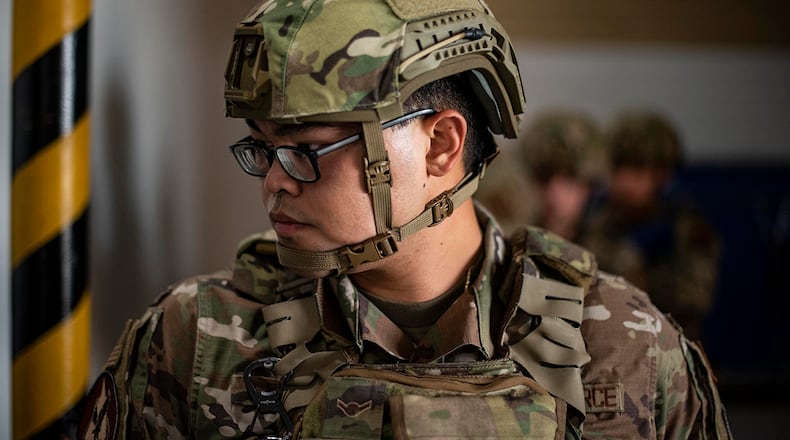AFMC manages more than one-third of the total Air Force budget, dispersing funds across six centers, multiple platforms and installations, in support of missions ranging from research and development, to test, acquisition, life cycle management, sustainment, installation support and more. More than $8.2 billion supports readiness, infrastructure, installation and mission support activities, and quality-of-life enhancements for Airmen across the service.
The command also manages the $18.4 billion Centralized Asset Management (CAM) portfolio that streamlines the programming, budgeting and sustainment of Air Force platforms and munitions at an enterprise, fleet-wide level.
This year’s strategy focused on ensuring AFMC’s most critical requirements were addressed, regardless of the dollar value. Key funding successes this year include the award of a $600,000 contract to support the Edwards Air Force Base Military Personnel Facility and the resourcing of $142 million to fund a Second Destination Transportation shortfall.
A new fire station military construction project is nearing completion at Eglin Air Force Base, Florida, and $768,000 will ensure a the facility is equipped with a full communications suite, ready to operate on day one.
Other critical funding efforts included the award of a $300,000 contract for Wright-Patterson Air Force Base Weather Operations and $100,000 to fund the Multi-Spectral Test and Training Environment. Anti-terrorism Force Protection requirements at several AFMC bases received more than $200,000 in funding, and $400,000 funded Air Force Life Cycle Management Center’s Propulsion Directorate requirements.
Working closely with the Air Force Installation and Mission Support Center teams, AFMC also executed $9.1 million for new female body armor and $6 million for next-generation ballistic helmets for Air Force defenders.
More than $2.4 million of this year’s budget was allocated toward a number of squadron innovation requirements, and $18 million of funding supported AFMC We Need initiatives. This included $7.3 million for facility improvements, $9.7 million in information technology requirements, including the purchase of more than 7,000 improved laptops for AFMC Airmen, and funding to support a RAND study focused on cross-functional authorities.
A cross-functional Logistics, Civil Engineering, Force Protection and Nuclear Integration Directorate and AFMC Financial Management CAM team leveraged innovation and collaboration in the execution of its portfolio this year, particularly when faced with $1.1 billion in unfunded requirements and minimal funding less than six months ago. By reallocating funding to ensure readiness of the highest priority weapons systems, the team sourced $617 million mission-critical UFRs, including F-22 supply services and engine overhauls, RC-135 and KC-135 engine overhauls, B-1 fatigue testing and fuselage repairs, F-15E programmed depot maintenance, Eglin radar receiver replacements and more.
The CAM team also processed more than $400 million in reimbursements for fuel, flight line maintenance and weapons system support for dozens of customers and organizations across the Air Force, ensuring continuity of support for mission readiness.
On the installation and infrastructure side, the AFIMSC mitigated challenges from ongoing storm damage requirements at multiple locations, Defense Enterprise Accounting and Management System updates and the coronavirus pandemic, among others, ensuring that installations and Airmen were able to remain mission-ready.
The center executed more than $402 million toward COVID-19 requirements and $531 million for natural disaster relief activities. Teams also ensured $4.7 billion in facilities, sustainment, restoration and modernization requirements were resourced, including $1.6 billion for nearly 600 facility projects.
Holcomb expects some of the fiscal 2020 challenges to impact the resourcing environment as the command enters the new fiscal year; however, AFMC leadership expects that by focusing resources on supporting the warfighter and looking at resourcing processes through an innovative lens, the command is well postured to execute its critical missions in fiscal 2021.
“The AFMC financial management professionals are already working strategies to ensure the fiscal year 2021 execution plans meet the needs of our Airmen,” said Holcomb “We’re looking forward to all that comes with a new year.”
About the Author
